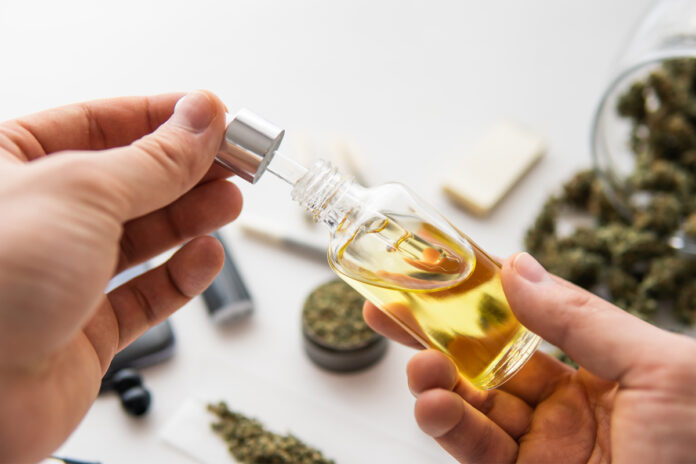As a naturopathic physician living in Washington, I was incredibly pleased when, in 2007, the initiative for medical cannabis was extended and better defined to allow access to more people. In my “previous life” as a graduate student doing cancer research, I was interested in potential uses for cannabinoids. In those early years, the endocannabinoid system was in the early stages of being described. I still am very interested. I have used CBD clinically for a variety of issues and conditions. I have also used combinations of CBD and THC for pain management and sleep disorders.
There exists a whole world of cannabinoids, each with its own, probably unique profile and each with its own potential benefits and uses. There are, however, no “miracle” cannabinoids—not CBD, not THC, and not any broad- or full-spectrum product. I like to remind people that the cannabis plant did not evolve to produce cannabinoids for them—it evolved the cannabinoids for its own defense. While serendipitously cannabinoids like CBD can be of great benefit to humans, they are not a “magic bullet.” The health consequences of poor life habits cannot be mitigated with a daily dose of CBD. Nor can CBD make you incredibly sexy or reverse the aging process. CBD can be of great benefit to reduce pain and stress, as an anti-inflammatory, as a sleep aid, to promote calm, to treat some seizure disorders, and as an everyday “wellness” supplement.
The CBD market has been called “the Wild West”—and to a large extent it is. Why? Because right now many aspects of the market are unregulated or poorly regulated. Exaggerated (at best) claims are made, astonishing results are promised, and consumers are urged to buy CBD in one form or another—”while supplies last!”
We still have a whole lot to learn about individual cannabinoids like CBD and how all the components of the hemp plant—cannabinoids, terpenes, flavonoids, fatty acids, phenols, and others—may work together to produce an effect. This takes time—something a lot of people don’t want to hear, but the truth, nonetheless. It takes time to figure out what each component may be doing and how it may be doing it. It takes even longer to figure that out with many different components working, as is believed, via an entourage effect. It’s pretty easy to bandy that term around, but the fact is it has not yet been proven to exist.
CBD consumers need to be educated about the potential benefits of CBD—and, they need to take the time to learn what delivery method works best for them. The CBD market is currently unregulated—and that means there are some pretty shady characters out there. In the U.S., the Food and Drug Administration (FDA) is currently considering regulations—and for now, it is not legal to add CBD to foods or to label it as a supplement—yet, we see it all the time. Labels are inconsistent and sometimes inaccurate. Consumers can visit websites like LeafReport or ProjectCBD to learn more. I have been writing educational, evidence-based articles for LeafReport for quite a while now.
So, what do I tell my patients about CBD products? I tell them the evidence supports the use of topical CBD for pain with some evidence supporting the use of oral CBD (in capsule or tincture form) to help reduce more widespread pain. I only recommend using vape pen CBD delivery systems for those in acute pain or as a temporary relief for chronic pain that is quickly effective. Oral CBD is very useful for anxiety, insomnia, muscle spasms, as an anti-inflammatory in some chronic inflammatory conditions, and as an anti-seizure agent—in fact, the only FDA approved form of CBD is Epidiolex, used to treat some forms of epilepsy.
CBD has what is technically known as a wide therapeutic window—meaning that it is safe over a wide range of doses. This does not mean that anyone should “guzzle” CBD, though!
My primary—and very often repeated—suggestion to people using CBD is to “start low and go slow.” This means starting at the lowest dose possible for their choice of delivery method and increasing the dose very slowly by taking the same dose for at least a week and assessing its effectiveness before increasing the dose incrementally until they have reached their therapeutic goal. This may mean starting with a quarter of a gummy, half a dropperful of oil, or one capsule of the smallest milligram dose of CBD they can find to see if that dose is effective at reducing pain, improving sleep, reducing anxiety, or reducing, for example, their symptoms of Crohn’s disease. Then, if necessary, they can go to the next higher dose for another week—once their symptoms are relieved, they’ve have found their appropriate dose.
Finally, I recommend going to reputable sources to learn as much as they can about their condition, what goals are realistic, and which form or delivery method of CBD may be most suitable.
 Dr. Zora DeGrandpre practices naturopathic medicine in rural Washington and is a professional medical and scientific writer and editor, specializing in naturopathic, functional, botanical, and integrative medicine. She holds degrees in drug design, immunology, and natural medicine and has extensive research experience in cancer and molecular immunology.
Dr. Zora DeGrandpre practices naturopathic medicine in rural Washington and is a professional medical and scientific writer and editor, specializing in naturopathic, functional, botanical, and integrative medicine. She holds degrees in drug design, immunology, and natural medicine and has extensive research experience in cancer and molecular immunology.


